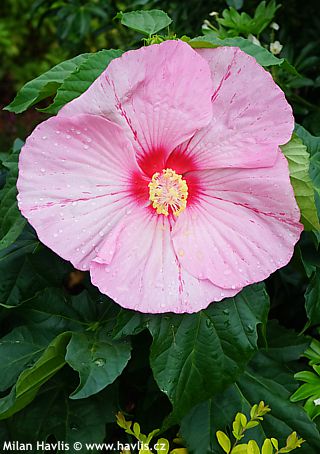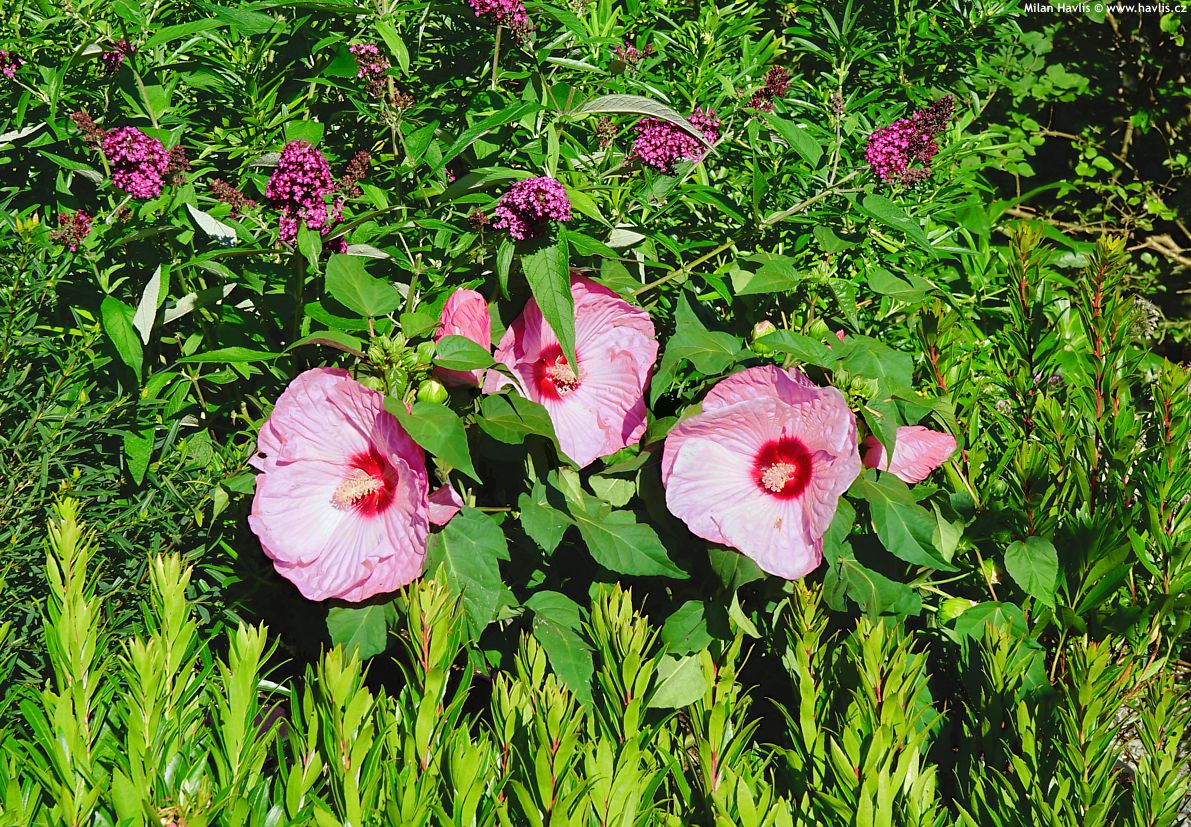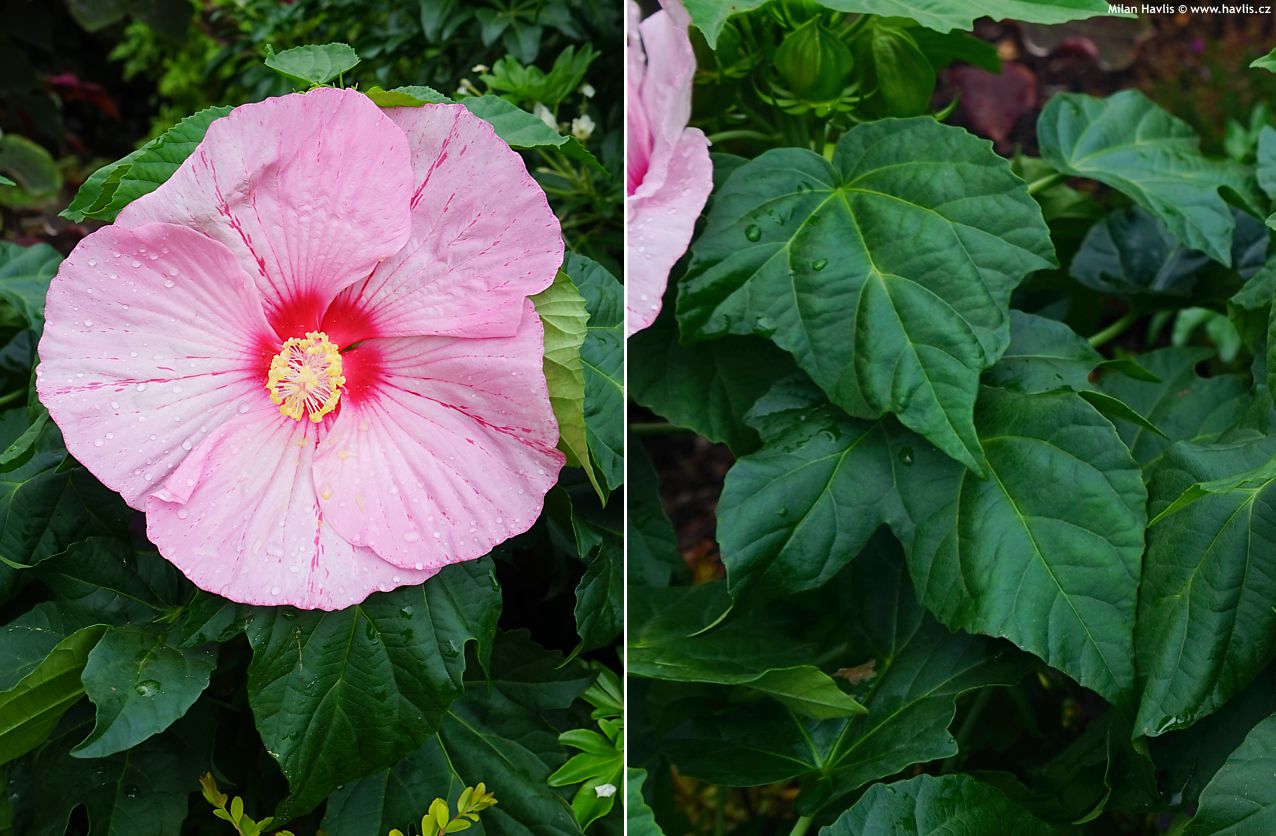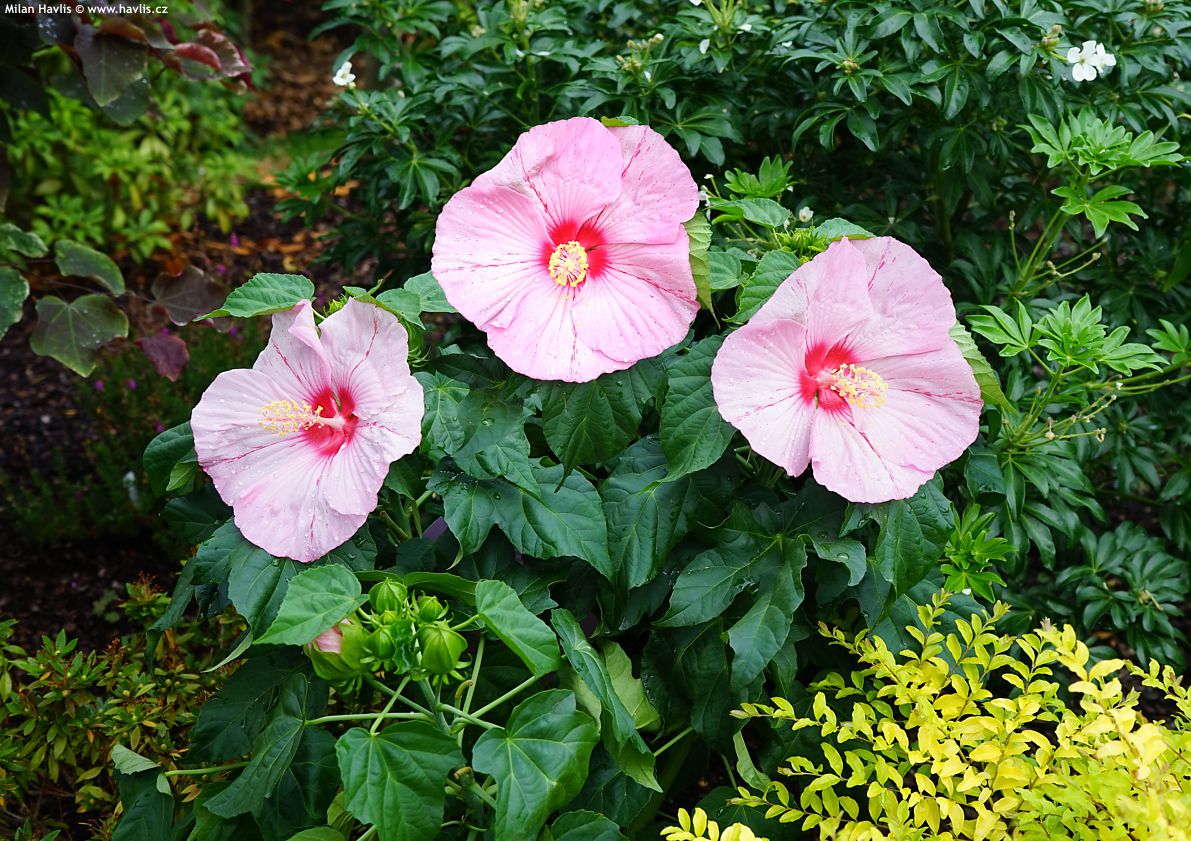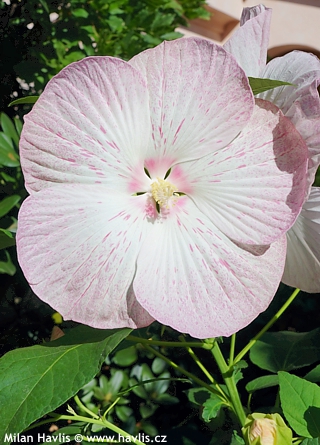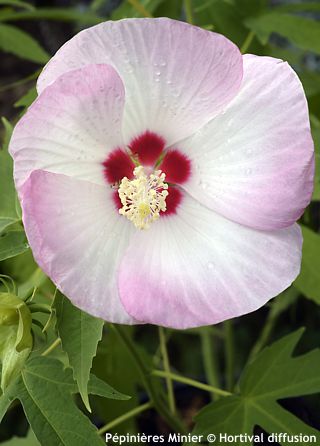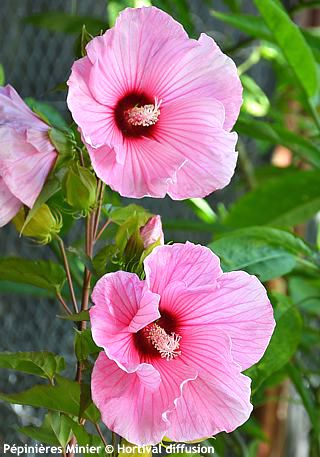Hibiscus moscheutos EXTREME CLOUDY PINK swamp mallow, hardy hibiscus
Hibiscus
Swamp mallow and its hybrids have been sought after plants for the past few years now. They are perennials with sturdy stems that have large, tropically looking flowers. This variety was bred by Cornelis A.Oostveen from the Netherlands who specializes in large-flowered hardy hibiscus and has introduced some of the finest compact varieties such as Oak Red, Extreme Hot Pink, and Extreme Magenta. PPAF.
EXTREME CLOUDY PINK is a spectacular variety of swamp mallow whose flower size is really extreme: you can expect flowers that are reliably 20 cm across and that we measured only on young plants. So, let’s expect a couple of centimetres more on older and well-established plants. They are a very pale pastel pink or rather white with a cloudy pink hues and occasional deep pink veins which makes it as unique as the SPARKLE variety from the same breeder. It blooms from August to September or October – the older the plant and the more you fertilize, the more buds and flowers it will produce.
The leaves are exceptional, too. First leaves that emerge in late spring are narrowly heart-shaped, then in early summer they change to mulberry-like three-lobed just like those on OAK RED variety, but nearer the stem tops, just below the flower buds, they change back to narrowly heart-shaped again and conspicuously smaller. They are deciduous, dark green and turn golden yellow in autumn. The breeder states a mature plant height of 50 to 60 cm, but given great variability in size in different locations, you might be on the safe side expecting twice as much in good soil with plenty of moisture. Still, the plant is compact, usually as tall as wide.
The plant is dependent on regular watering and feed supply. Use fertilizers with enough phosphorus for abundant flowering, or any other quick-release fertilizers where nitrogen is not predominant. Any fertilizing has to stop by end September. Still, nitrogen-based fertilizer is useful when the plants wakes up from dormancy in mid spring, but should not be used longer than 8 weeks. Hardy hibiscus emerges very late, sometimes as late as in late May.
For healthy growth and profuse flowering it needs a sunny location with a lot of moisture which can be achieved by good mulching. The soil has to be fertile and permeable, never let it dry out either in summer or during dry winters - its fleshy roots need some moisture also in winter. Hardy to min. -23 °C (USDA zone 6). Cut back the plant only a few centimetres above ground level in spring.
Last update 04-09-2023

































